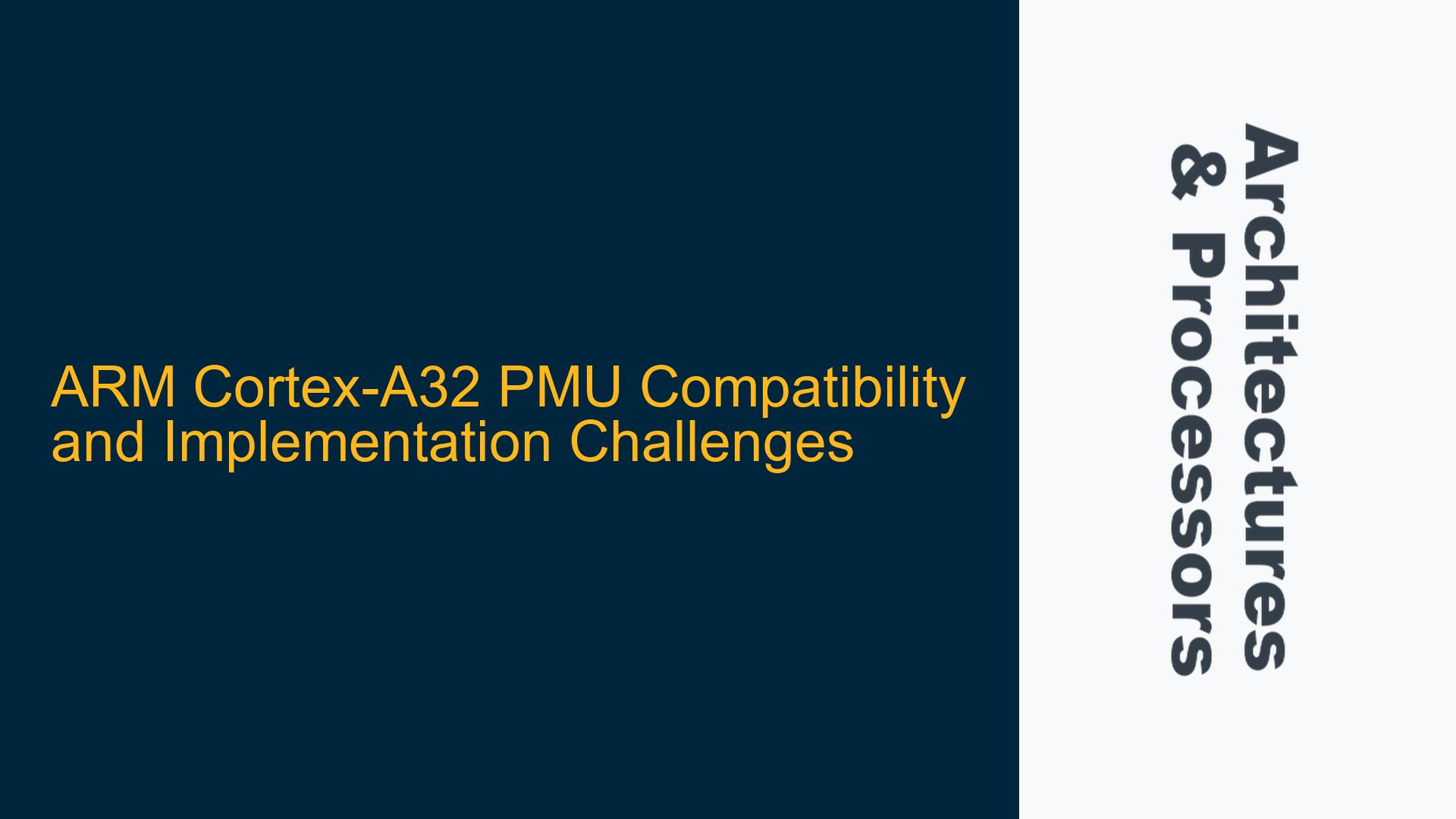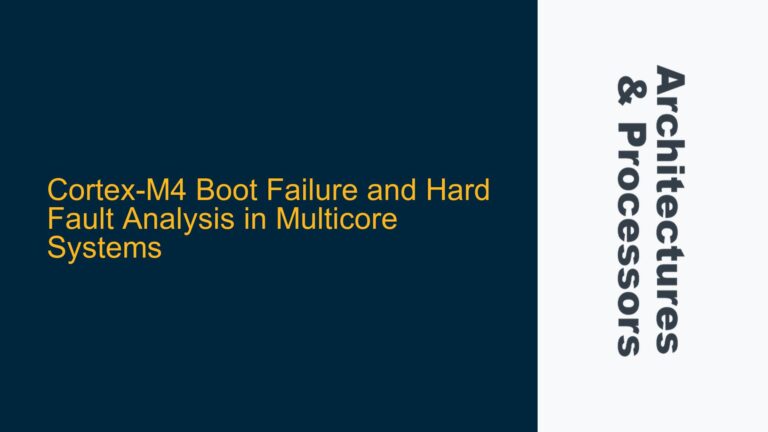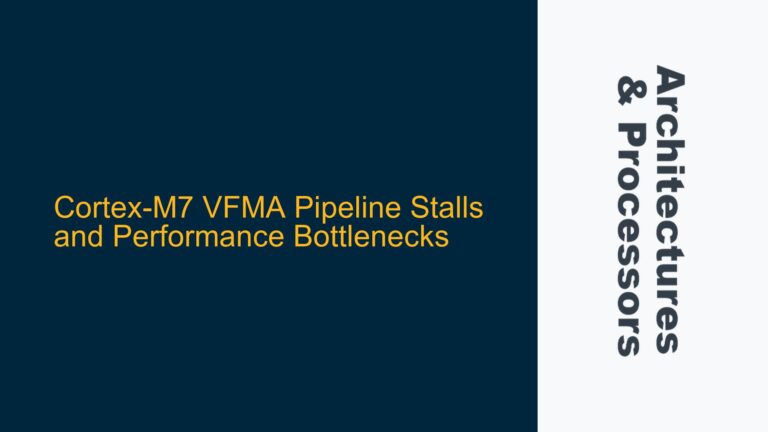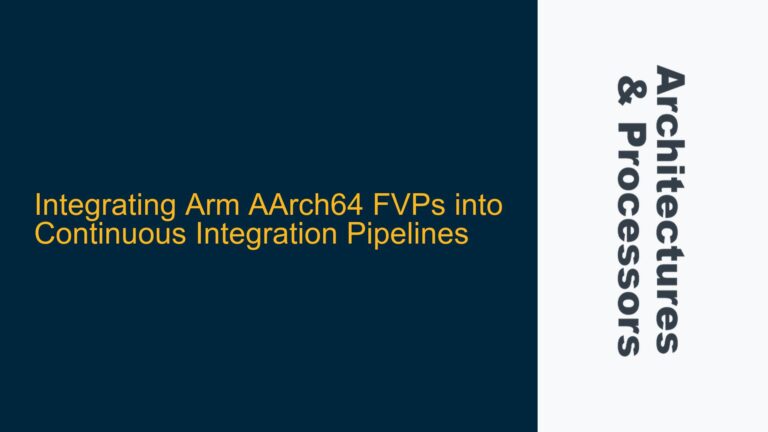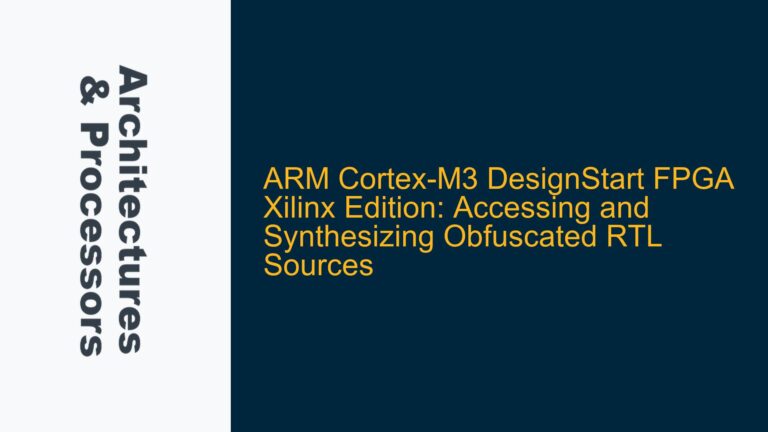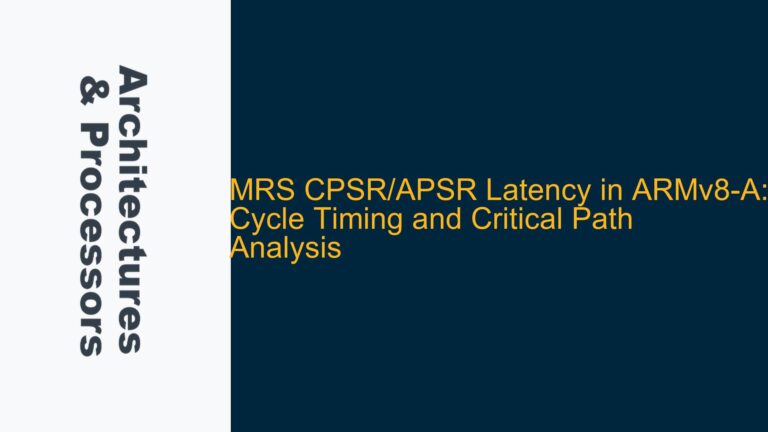ARM Cortex-A32 PMU Programming Model and ARMv7 Compatibility
The ARM Cortex-A32 processor, an implementation of the ARMv8-A architecture with support only for the AArch32 execution state, presents unique challenges when it comes to Performance Monitoring Unit (PMU) support. The PMU is a critical component for performance analysis, enabling developers to monitor events such as cache misses, branch mispredictions, and instruction execution counts. Understanding the PMU programming model for the Cortex-A32 is essential for leveraging its performance monitoring capabilities effectively.
The Cortex-A32 PMU programming model is largely compatible with the ARMv7 PMU, as confirmed by ARM representatives. This compatibility stems from the fact that the Cortex-A32 is an AArch32-only implementation of the ARMv8-A architecture, and thus inherits many of the PMU features and programming interfaces from ARMv7. However, there are subtle differences and specific PMU events that are unique to the Cortex-A32, which must be accounted for when implementing PMU support.
The PMU in ARMv7 and Cortex-A32 operates through a set of performance monitor control registers, which include the Performance Monitor Control Register (PMCR), Performance Monitor Count Enable Register (PMCNTENSET), and Performance Monitor Event Select Registers (PMSELR). These registers allow developers to configure which events to monitor, enable or disable counters, and collect performance data. The Cortex-A32 retains this register set, ensuring that developers familiar with ARMv7 PMU programming can transition to the Cortex-A32 with minimal friction.
However, the Cortex-A32 introduces additional PMU events that are specific to its microarchitecture. These events provide insights into the unique performance characteristics of the Cortex-A32, such as its pipeline structure, cache hierarchy, and memory subsystem. Developers must consult the Cortex-A32 Technical Reference Manual (TRM) to identify these specific events and understand how they differ from those in ARMv7.
Specific PMU Events and Microarchitectural Differences in Cortex-A32
While the Cortex-A32 PMU programming model is compatible with ARMv7, the specific PMU events supported by the Cortex-A32 can differ significantly. These differences arise from the microarchitectural enhancements and optimizations in the Cortex-A32, which are designed to improve performance and power efficiency compared to earlier ARMv7-based cores.
One of the key areas where the Cortex-A32 PMU events differ is in the cache hierarchy. The Cortex-A32 features a more advanced cache architecture, with separate Level 1 (L1) instruction and data caches, and a unified Level 2 (L2) cache. This architecture introduces new PMU events related to cache access patterns, such as L1 cache misses, L2 cache hits, and cache line fills. These events provide detailed insights into how the application interacts with the cache hierarchy, enabling developers to optimize their code for better cache utilization.
Another area of difference is in the branch prediction unit. The Cortex-A32 incorporates a more sophisticated branch predictor compared to ARMv7 cores, which reduces the penalty for branch mispredictions. The PMU in the Cortex-A32 includes events that track branch prediction accuracy, such as the number of correctly predicted branches, mispredicted branches, and branch target buffer (BTB) hits. These events are crucial for understanding the impact of branch prediction on application performance, particularly in code with complex control flow.
The Cortex-A32 also introduces PMU events related to its memory subsystem, including events for tracking memory access latency, data bus utilization, and memory controller activity. These events are particularly useful for identifying memory bottlenecks and optimizing data access patterns in memory-intensive applications.
To fully leverage the Cortex-A32 PMU, developers must carefully map out the specific PMU events available on the Cortex-A32 and understand how they relate to the microarchitectural features of the processor. This requires a thorough review of the Cortex-A32 TRM and potentially cross-referencing with ARMv7 PMU documentation to identify similarities and differences.
Implementing Cortex-A32 PMU Support in Software
Implementing PMU support for the Cortex-A32 involves configuring the PMU registers, selecting the appropriate events to monitor, and collecting performance data. Given the compatibility with the ARMv7 PMU programming model, developers can use existing ARMv7 PMU libraries and tools as a starting point. However, adjustments must be made to account for the specific PMU events and features of the Cortex-A32.
The first step in implementing Cortex-A32 PMU support is to initialize the PMU registers. This involves setting up the PMCR to enable the PMU, configuring the PMCNTENSET to enable specific counters, and selecting events using the PMSELR. Developers must ensure that the PMU is properly configured before starting performance monitoring, as incorrect settings can lead to inaccurate or incomplete data.
Once the PMU is initialized, developers can begin monitoring performance by selecting the events of interest. For example, if the goal is to analyze cache behavior, developers might configure the PMU to track L1 cache misses and L2 cache hits. If the focus is on branch prediction, events related to branch mispredictions and BTB hits can be selected. The Cortex-A32 TRM provides a comprehensive list of available events, along with their event codes and descriptions.
After selecting the events, developers can start the performance counters and run their application. The PMU will increment the counters based on the occurrence of the selected events, providing real-time performance data. Once the application has completed, developers can read the counter values from the PMU registers and analyze the results.
To simplify the process of implementing Cortex-A32 PMU support, developers can create a library or framework that abstracts the low-level PMU register access and provides a higher-level interface for configuring and collecting performance data. This library can include functions for initializing the PMU, selecting events, starting and stopping counters, and reading counter values. By encapsulating the PMU functionality in a library, developers can reuse the code across multiple projects and reduce the risk of errors.
In addition to implementing PMU support in custom software, developers can also explore existing tools and libraries that support ARM PMUs. For example, the Linux kernel includes support for ARM PMUs through the perf subsystem, which provides a high-level interface for performance monitoring. However, as noted in the forum discussion, there may be limited support for the Cortex-A32 PMU in Linux, particularly for specific PMU events. In such cases, developers may need to extend the Linux perf subsystem or implement custom PMU support in their application.
In conclusion, implementing PMU support for the ARM Cortex-A32 requires a deep understanding of the PMU programming model, the specific PMU events supported by the Cortex-A32, and the microarchitectural differences compared to ARMv7. By leveraging existing ARMv7 PMU libraries and tools, and making necessary adjustments for the Cortex-A32, developers can effectively monitor and optimize the performance of their applications on this powerful processor.
